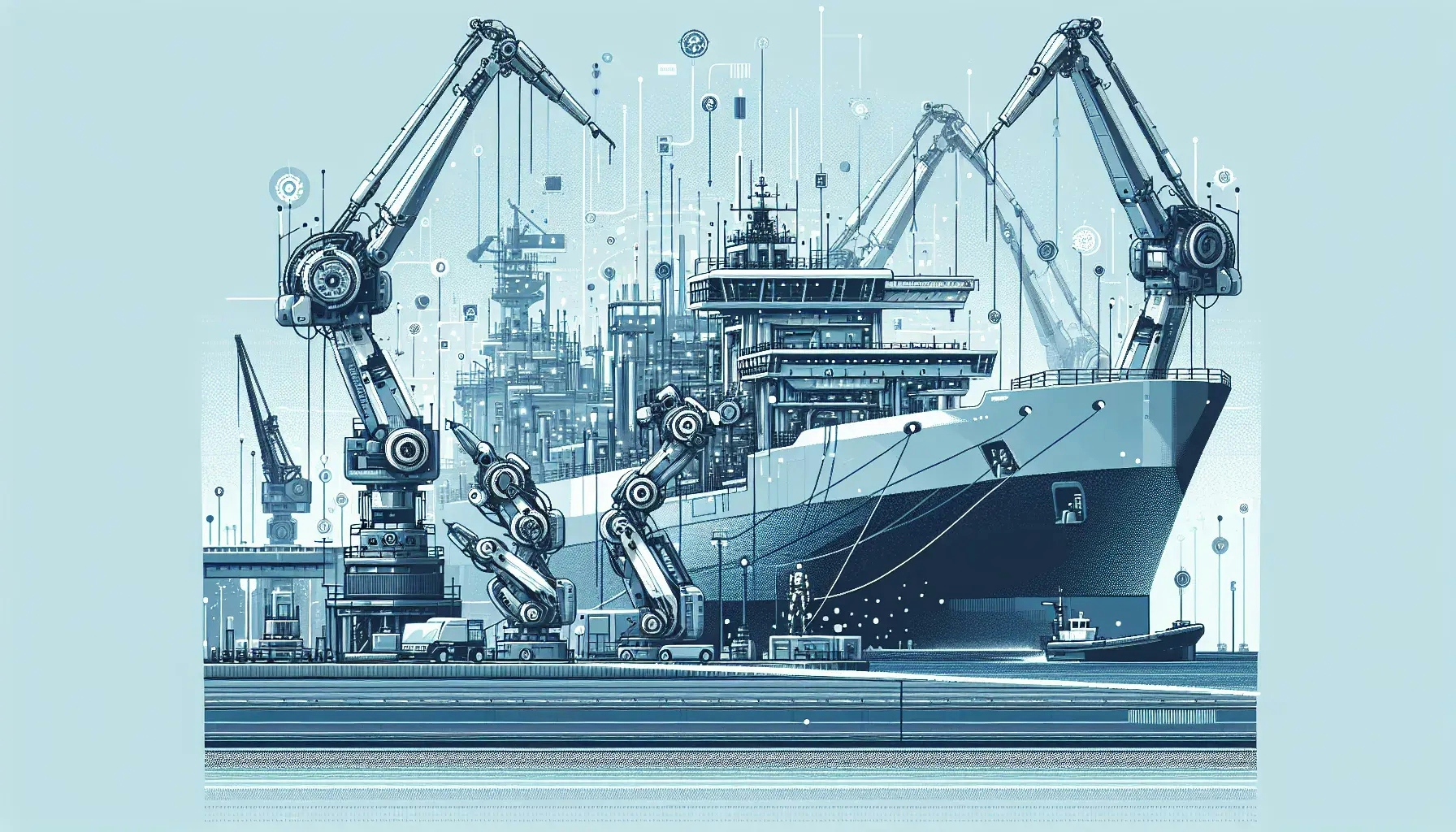Automation Trends in Shipbuilding
Shipbuilding.io

Welcome to our deep dive into the world of shipbuilding, specifically focusing on the exciting realm of automation. We'll explore how this technology is revolutionizing the industry, making processes more efficient and cost-effective. From design to construction and even maintenance, automation is playing a pivotal role in transforming the way ships are built and operated. So, let's set sail on this journey of discovery and learn more about the automation trends shaping the future of shipbuilding.
The Rise of Automation in Shipbuilding
Automation has been making waves in the shipbuilding industry for several years now. It's not just about replacing manual labor with machines; it's about integrating advanced technologies to streamline processes, improve accuracy, and enhance productivity.
Robotic systems, for instance, are now commonplace in shipyards worldwide. They're used for tasks such as welding, cutting, and painting, which were traditionally labor-intensive and time-consuming. These robots not only work faster but also deliver a level of precision that's hard to achieve manually.
Moreover, automation is not confined to the construction phase. It's also transforming the design and planning stages of shipbuilding. Computer-aided design (CAD) and computer-aided manufacturing (CAM) systems are now integral parts of the shipbuilding process. They allow for the creation of detailed 3D models of ships, which can be tested and modified digitally before construction begins.
Automation and Efficiency in Shipbuilding
Efficiency is a key driver behind the adoption of automation in shipbuilding. Automated systems can work around the clock without breaks, drastically reducing the time it takes to build a ship.
For example, automated welding machines can complete tasks in a fraction of the time it would take a human welder. They also produce consistently high-quality welds, reducing the need for rework and ensuring the structural integrity of the ship.
In addition, automation can significantly reduce waste. Precise cutting and assembly techniques mean fewer materials are wasted, leading to cost savings and a smaller environmental footprint.
The Role of Artificial Intelligence in Shipbuilding Automation
Artificial Intelligence (AI) is another key player in the automation of shipbuilding. AI can analyze vast amounts of data to make predictions and decisions, helping to optimize processes and improve outcomes.
In the design phase, AI can be used to analyze historical data and predict the best design for a specific type of ship. This can lead to more efficient designs and better performance.
AI can also play a role in the construction phase. For example, it can be used to monitor the performance of automated systems and make adjustments in real-time to improve efficiency and quality.
Automation in Ship Maintenance and Repair
Automation is not only changing how ships are built but also how they're maintained and repaired.
Robotic systems can now perform tasks such as inspecting the hull of a ship for damage or corrosion. This not only saves time but also improves safety by reducing the need for human divers.
Moreover, predictive maintenance technologies are becoming increasingly popular. These systems use sensors and AI to monitor the condition of a ship's components and predict when they might fail. This allows for proactive maintenance, reducing downtime and repair costs.
The Future of Automation in Shipbuilding
The future of automation in shipbuilding looks bright, with several exciting trends on the horizon.
One such trend is the use of autonomous ships. These vessels can navigate and operate without a human crew, using a combination of AI, sensors, and automated systems. While still in the early stages of development, autonomous ships could revolutionize the shipping industry by reducing costs and improving safety.
Another trend is the use of digital twins. A digital twin is a virtual replica of a physical object, in this case, a ship. It can be used to simulate and analyze the performance of the ship under different conditions, helping to optimize design and operation.
Challenges and Opportunities in Shipbuilding Automation
Despite the many benefits, automation in shipbuilding also presents challenges.
One of the main challenges is the high initial cost of implementing automated systems. However, these costs can be offset by the increased efficiency and quality that automation brings.
Another challenge is the need for skilled workers who can operate and maintain these advanced systems. This calls for investment in training and education.
On the other hand, automation also presents opportunities. It can create new jobs in areas such as robotics and AI, and it can help shipbuilding companies stay competitive in a rapidly evolving industry.
Navigating the Future of Shipbuilding with Automation
Automation is undeniably reshaping the shipbuilding industry, bringing about increased efficiency, improved quality, and new opportunities. While challenges exist, the benefits far outweigh them, making automation a key trend to watch in the coming years. As we navigate the future of shipbuilding, it's clear that automation will continue to play a pivotal role, steering the industry towards new horizons of innovation and excellence.